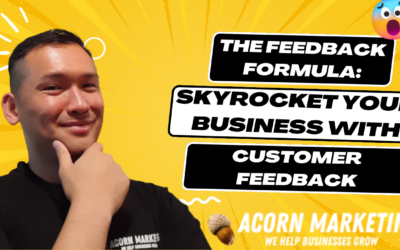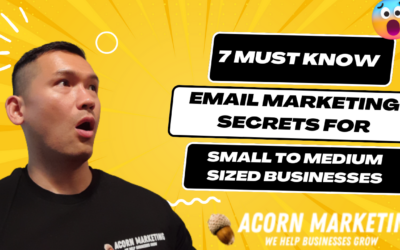ChatGPT-4’s Game-Changing Tips for SMEs: Level Up Your SEO and Content Creation!
As a small or medium-sized business owner, finding ways to optimize your SEO and content creation strategy is key to staying competitive in today’s digital landscape. With that in mind, let’s delve into how leveraging ChatGPT-4, the latest AI developed by OpenAI, can be a game-changer for your business.
ChatGPT-4, also known as GPT-4, isn’t just an impressive AI model. It’s more like a powerful research assistant, capable of producing creatively coherent content, from poems to stories and essays. Comparing it with its predecessor, ChatGPT-3.5, reveals some distinct advantages.
First, let’s look at the conversation capacity. While ChatGPT-3.5 can remember conversations to around 3,000 words, GPT-4 can remember up to 25,000 words. It’s like comparing a high school researcher with a college or even a master-level researcher – the depth and scope are vastly improved.
Moreover, GPT-4’s improved coherence and creativity in content generation make it a valuable tool for businesses. In one notable test, it even passed the bar exam in the top 10%, underscoring its comprehensive grasp of complex information and its capacity to generate meaningful, contextually accurate responses.
However, it’s crucial to be aware of GPT-4’s limitations. Its knowledge cut-off is in September 2021, meaning it’s not updated with information beyond that date. While this isn’t usually an issue for most content needs, it might limit its effectiveness for very recent developments or trends.
Next, let’s address an important question – will AI-generated articles be penalized by Google’s SEO algorithm?
AI-generated content is still relatively new, and as of now, Google’s algorithms are incapable of distinguishing AI-produced content from human-written content. However, as technology evolves, this might change.
There are currently three schools of thought on this matter:
- Google doesn’t care about the content origin, only its relevance and value.
- Google might prioritize user-generated content, favoring the human touch.
- Google won’t penalize AI-generated content as long as it’s unique, offers value to the reader, and doesn’t violate any SEO guidelines.
Our opinion leans towards the third perspective. The crux of Google’s mission is to organize information and make it universally accessible and useful. If AI-generated content serves this purpose and provides value to users, there’s no logical reason for Google to penalize it.
Stay tuned as we delve further into how you can leverage ChatGPT-4 to supercharge your content creation and SEO efforts!
The use of ChatGPT-4 can significantly enhance your content creation process. Here’s a five-step method to put this powerful AI to work:
1. Finding Impactful Article Ideas
Start by identifying topics that resonate with your audience and are relevant to your field. Use keyword research, customer insights, and competitor analysis to discover these ideas.
2. Structuring the Article for ChatGPT-4
Prepare your article’s structure to be compatible with ChatGPT-4. This typically includes an introduction, body, and conclusion. You can use the AI to brainstorm an outline, ensuring a comprehensive perspective.
3. Generating Additional Article Points
ChatGPT-4 can provide additional points or suggestions for your article, covering all necessary aspects, and providing exhaustive information.
4. Writing the Article with ChatGPT-4
Develop your outline into a full-fledged article using ChatGPT-4. Specific prompts guide the AI to create content according to your needs in terms of audience, tone, and format.
5. Proofreading and Ensuring Uniqueness
Review the AI-generated content and ensure its uniqueness. This maintains quality and ensures SEO-friendliness.
In sum, this five-step process leverages ChatGPT-4’s abilities to generate high-quality, SEO-friendly content, taking your content strategy to new heights. We’ll delve into these steps in more detail in the subsequent sections.
Using Chat GPT Prompts to Generate Fresh Ideas for Content
In the era of personalized content and precision marketing, ChatGPT can be your trusted ally. Armed with a powerful suite of prompts, ChatGPT can offer invaluable insights into SEO keywords and customer psychology so you can come up with the best ideas for content creation.
Heres how…
1. SEO Keywords Prompts:
- Provide the 10 nearest semantically associated questions about “[enter your product/service in your location]”.
- What are low competition keywords for a blog post about “[enter your product/service in your location]”?
- Give me 25 low-competition keywords for [enter your products/services].
- Give me 5 blog post ideas related to “[enter your keyword]”.
Why SEO Keywords Prompts are Useful?
SEO Keyword prompts are crucial in generating blog post ideas that not only cater to your target audience’s interests but also align with what they’re actively searching for. They help identify low competition keywords to drive organic traffic, generate relevant questions around your products or services, and brainstorm blog post ideas that can seamlessly incorporate these keywords. The result is content that is inherently SEO-friendly and attractive to search engines and users alike.
2. Customer Psychology Prompts:
- What do [enter your target customer/audience] look for in [enter your product and services]?
- What are the reasons [enter your target customer/audience] would want to [purchase your product and services]?
- What are deeper reasons why [enter some of the points you got from prompt #2]?
- Why is having a [enter the deeper reason from step 3] so important for [enter your target customer/audience]?
- Why is it a top priority for a [enter your target customer/audience] to [enter the points you’ve received from prompt 5]?
- List 10 compelling blog ideas for [enter your products and services] that can help a [enter your target market/audience] can [enter deep underlying motivations that was gathered through steps 1-5] for a blog.
Why Customer Psychology Prompts are Useful?
Understanding customer psychology is the bedrock of creating content that resonates. The prompts are designed to delve deep into the mindset, motivations, and priorities of your target audience, allowing you to create content that genuinely meets their needs. Using these prompts, you can generate blog ideas that are not just compelling, but also tuned to the deep underlying motivations of your audience, thereby enhancing audience engagement and brand loyalty.
Structuring Your Blog/Article Outline with ChatGPT
Once you have a grasp on what you want to write about, the next step is to structure your ideas effectively. We believe that in order to have a article that flows coherently and provide the most value to your readers, then having a outline that you can feed into ChatGPT is critical. Here is how:
1. Stick to the Same ChatGPT Chat:
For continuity and context, always use the same ChatGPT chat for the same tasks. This will ensure a seamless flow of ideas and better coherence in the final output.
2. Follow the Classic Article Structure for Self-Brainstorming an Outline:
Start with an introduction that highlights the problem and the solution. This is followed by the body that delves deeper into the solution, providing various points and perspectives that add value for the reader. Wrap up with a conclusion that provides a succinct summary, helpful tips, and answers to potential FAQs. You should come up with a basic outline on your own that can act as a base to go from.
3. Use ChatGPT for further Brainstorming of Your Outline:
After you’ve came up with a basic outline for your article you can then ask ChatGPT to futher brainstorm an more in-depth outline for your topic. It can consider points that have not been included, conduct competitive research, and ask ChatGP for further questions that could enrich your outline.
Prompt “(enter your basic outline here) Are there any more points that can be used for my article that should be considered? Please give me 10 ideas.”
4. Seek Expert Advice Prompt for Brainstorming of Your Outline:
Take advantage of ChatGPT’s versatility by seeking expert advice.
Prompt: “You are a highly regarded {enter any type of expert} with extensive experience. Advise me on how to create content that resonates with {your target audience}. What thought-provoking questions should I pose? Focus on providing unique and knowledgeable insights.”
5. Challenge Conventional Wisdoms Prompt for Brainstorming of Your Outline:
Push the boundaries with your content by challenging conventional wisdoms.
Prompt: “For this outline, provide examples that challenge the conventional understanding of {enter topic here}. Generate a plan for content that pushes the boundaries and provokes new ideas, things that the masses don’t consider or think about.”
In essence, ChatGPT can be leveraged not just for creating the initial spark of an idea, but also for structuring, refining, and enhancing it into a full-fledged, engaging article.
Writing Your Article with ChatGPT
After outlining the structure, you can progress to the writing phase. ChatGPT can assist in drafting the article based on the established outline. The beauty of AI is that you can specify various parameters to make sure your content aligns with your objectives.
Kick-starting the Writing Process:
Start by requesting ChatGPT to write an article using the following prompt:
Prompt: “Please help me write an article titled (enter article name). The purpose of this article is to (enter purpose here). This is the outline I would like my article to be (enter outline listed).”
Other useful prompts that can enrich your article:
- Specify Your Audience: Prompt: “Please write an article for beginners on…”
- Determine Article Length: You can control the length of your content by indicating the desired word count.
- Adjust the Tone of Voice: You can request for an article in a specific tone, whether formal, conversational, persuasive, inspirational, humorous, or authoritative.
- Select Your Article Format: Depending on your requirements, you can instruct ChatGPT to create a step-by-step guide, a long-form article, or any other format you prefer.
- Key Points or Sections: Prompt: “Please cover the following points: point 1, point 2, point 3…”
- SEO and Keywords: Prompt: “Please include the following keywords: Keyword 1, Keyword 2.
The more specific your instructions are, the more aligned the final output will be to your requirements. With ChatGPT, you have a dynamic writing partner that caters to your unique content creation needs.
Proofreading Your AI generated Articles
Even though AI generated content can help you create more content a lot faster, it won’t replace the nuanced understanding of a human expert. While the AI might produce technically accurate content, it can miss subtle details or evolving insights in specialized fields. Thus, it’s essential for someone knowledgeable in the topic to proofread and refine AI-generated outputs. This blend of AI capability and human knowledge ensures that content remains accurate, relevant, and contextually sound. In content creation, while AI provides the tool, the human touch guarantees its authenticity and depth.
Wrapping it Up: Final Thoughts and More Tips
In conclusion, the advent of AI technologies like ChatGPT-4 has significantly transformed the content creation landscape. It’s now possible to leverage this technology to achieve a level of efficiency and effectiveness previously reserved for professional writers. The combination of human creativity and the computational capabilities of AI like ChatGPT-4 can yield impressive results.
When it comes to article writing, having a firm grasp on structuring your content is key. With ChatGPT-4, not only do you have a robust tool to generate text, but also a guide that assists you in outlining and formatting your article optimally. This positions you to make the most of AI technology and create engaging, SEO-friendly content that provides value to your readers.
Plagiarism is a critical aspect to consider in content creation, especially for SEO purposes. After using ChatGPT-4 to generate your content, it’s recommended to use plagiarism checkers that are designed for SEO to ensure the uniqueness of your content. This step helps avoid potential penalties from search engines and maintains your site’s integrity.
Lastly, don’t forget the importance of a catchy title in drawing readers to your content. With ChatGPT-4, you can easily generate a variety of engaging titles for your articles. This feature further underscores the versatility of ChatGPT-4 as a content creation tool and its potential to revolutionize how we approach writing for SEO.
In essence, the partnership of AI and human creativity promises a bright future for content creation. With tools like ChatGPT-4, you can level up your content game, drive better SEO outcomes, and provide significant value to your audience.



